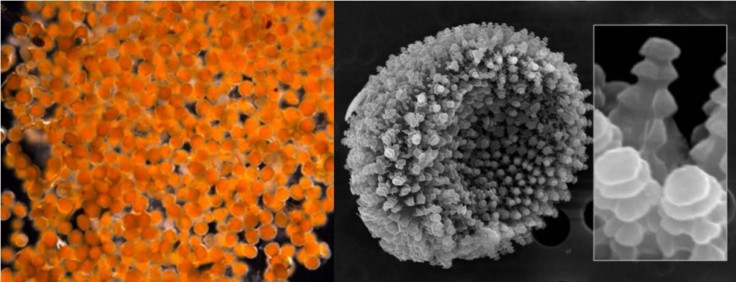UPDATE: Orange Goo Mystery Solved (Sort Of)

The mystery of the orange goo that washed up on the shorelines of an Alaska village has again been solved - partially. It turns out the substance is made up of fungal spores, not microscopic eggs deposited by some form of crustacean as was originally thought.
The new announcement from the National Oceanic and Atmospheric Administration (NOAA) corrects the estimates made by Alaska-based NOAA scientists last week.
The scientists in Alaska sent samples of the mysterious goo to NOAA's Center for Coastal Environmental Health and Bimolecular Research, based in Charleston, South Carolina. There, they determined that the material was in fact fungal.
The team of scientists in South Carolina found that the material was consistent with spores from fungi that cause rust, a disease that infects plants by causing a rust-like color.
NOAA scientist Steve Morton, of the Charleston lab, said in a statement:
The spores are unlike others we and our network of specialists have examined; however, many rust fungi of the Arctic tundra have yet to be identified.
The latest news puts to rest any fears that the substance may have been toxic. Residents initially feared the material could be pollution from the nearby Red Dog Mine, the world's largest zinc producer.
Early tests proved it was biological matter and not waste.
However, because the goo turned powdery once it dried, residents were then concerned that it may have gone airborne and contaminated their crops.
According Julie Speegle, spokeswoman for NOAA's National Fisheries Service in Alaska:
Rust is a disease that only affects plants, so there's no cause for alarm, Speegle said, noting that details about its origins remained a mystery.
There just has not been a lot of research done on rust fungi in the Arctic. This is one that we've never encountered before that we know of, Speegle added.
The goo first washed up in the small Inupiat Eskimo town of Kivalina at the beginning of the month. Located in Alaska's remote northwest coast, the town sits at the tip of an eight-mile barrier reef.
When the orange goo mysteriously arrived in the town and dead fish were spotted in the bay, all 374 residents were baffled. No one in the village could remember witnessing such a phenomenon before.
One week later, the goo dried up and disappeared.
© Copyright IBTimes 2024. All rights reserved.












